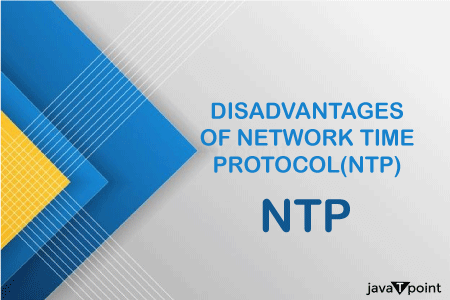Network Time Protocol
Introduction
The Network Time Protocol (NTP) is a critical networking protocol that allows computers and devices to precisely synchronize their clocks. It creates a hierarchical system of time servers, with stratum 0 servers at the top, similar to atomic clocks, to assure correct time throughout networks. NTP is an essential component of the digital world's dependable timekeeping infrastructure because it serves a critical role in preserving data consistency, coordinating events, and assuring security in many applications.

Features of NTP
The Network Time Protocol (NTP) has various distinguishing traits and characteristics:
- High Precision Synchronization: NTP is meant to give highly accurate time synchronization, frequently attaining sub-millisecond accuracy. This degree of accuracy is crucial for applications that rely on accurate and consistent time references.
- Hierarchical Stratum System: NTP organizes time servers into a hierarchical structure, with stratum 0 servers (such as atomic clocks or GPS receivers) at the top. This hierarchical structure guarantees that time information travels down via strata to client devices while retaining accuracy and consistency.
- Handling Leap Seconds: NTP takes into account leap seconds, which are changes made to Coordinated Universal Time (UTC) to allow for fluctuations in the Earth's rotation. NTP servers manage these modifications to maintain the correct time.
- Redundancy and Fault Tolerance: NTP allows clients to synchronize with several servers, providing redundancy and fault tolerance. Clients can switch to another server if one becomes unavailable or incorrect.
- Scalability: NTP may be scaled to support huge and varied networks, allowing it to serve many clients while preserving accuracy and precision.
- Public NTP Servers: Many organizations and institutions run public NTP servers, making time synchronization available to the whole internet community.
- Client-Server Architecture: NTP operates on a client-server architecture, with clients requesting time information from NTP servers. Servers respond with the current time and any correction factors that are required.
- Efficient Algorithms: NTP employs advanced algorithms to compute and correct for network delays and packet processing times, hence enhancing time synchronization accuracy.
- Widely Used: NTP is a widely used standard for ensuring time consistency in a wide range of businesses, including banking, telecommunications, and network infrastructure management.
- Open-Source Implementations: There are open-source NTP implementations available, such as the reference NTP software, making it appropriate for a broad variety of systems and applications.
NTP is critical for preserving order and stability in networked contexts because it guarantees that diverse systems and devices may coexist while keeping a consistent and accurate time reference.
Advantages of NTP
Network Time Protocol (NTP) has several advantages, making it a vital component of networked systems and applications. The following are some of its key benefits:

- Accurate Time Synchronization: NTP enables very precise time synchronization, frequently with sub-millisecond precision. This precision is essential for applications requiring exact time, such as financial transactions and scientific investigations.
- Data Consistency: NTP guarantees that data captured and processed by multiple devices or systems is consistently timestamped, which is critical for data integrity and synchronization in dispersed situations.
- Security: NTP provides secure time synchronization via authentication and access control techniques. This aids in the prevention of time-related attacks, such as time spoofing, which can impair network operations.
- Event Coordination: Many applications and services rely on exact time synchronization to coordinate activities. NTP guarantees that events happen in the right order, which helps with activities like log management and network debugging.
- Global Availability: Because public NTP servers are available all over the world, time synchronization is now available to a large variety of consumers and organizations.
- Hierarchical Structure: NTP's hierarchical stratum architecture guarantees that time information travels down via strata, ensuring accuracy and preventing reference clock overloading.
- Industry Standard: NTP is extensively used and recognized as an industry standard for time synchronization, making it compatible with a wide variety of devices and systems.
Overall, NTP is vital in networked systems for preserving the right order of events, security, data integrity, and synchronization, making it an essential protocol for both the Internet and local area networks.
Disadvantages of NTP
While Network Time Protocol (NTP) has numerous benefits, it also has several drawbacks and limitations:

- Network Vulnerabilities: Because NTP runs across a network, it is vulnerable to network-related difficulties like delays, packet loss, and network congestion, all of which can influence the accuracy of time synchronization.
- Security Risks: NTP is subject to security concerns such as Man-in-the-Middle (MitM) attacks, in which hostile actors intercept NTP communication and modify time information. While NTP provides security measures such as authentication, they are not usually correctly implemented or enforced.
- External Server Dependence: NTP clients rely on external time servers for synchronization. If these servers become unavailable or unstable, the client's network may have synchronization difficulties.
- Complexity: NTP may be difficult to establish and administer, especially in big and remote networks. It might be difficult to ensure adequate NTP server hierarchy and security settings.
- Limitations in Accuracy: While NTP strives for sub-millisecond precision, reaching this degree of precision may not always be attainable, particularly in contexts with unpredictable network circumstances.
- Compatibility Issues: In certain circumstances, NTP may be incompatible with outdated or non-standard systems, necessitating additional work to integrate with NTP.
- Time Drift: Even using NTP, there might be some time drift over time. This is due to a variety of variables, including inconsistencies in hardware clocks and network circumstances. While NTP corrects for this drift, it may not completely remove it.
- Cost and Resource Needs: Maintaining very precise timekeeping infrastructure, such as stratum 0 servers, may be costly and resource-intensive, restricting its availability to some organizations.
- Limited Scalability in Some Environments: While NTP is scalable, very large and highly distributed networks may require additional technologies such as the Precision Time Protocol (PTP) for even better precision and scalability.
It's worth noting that many of these drawbacks may be avoided by good setup, security measures, and redundancy. NTP is still a very dependable and frequently used time synchronization technology, but it's important to be aware of these potential shortcomings and address them as needed in certain network contexts.
Applications of NTP
Because of its capacity to deliver exact and synchronized time, the Network Time Protocol (NTP) is a key protocol that finds use in a broad range of scenarios and sectors. NTP is mostly used in many applications such as:

- Financial Services: Accurate timekeeping is essential in the financial industry for time-stamped transactions, trade execution, and regulatory compliance. NTP guarantees that financial systems retain synchronized time to support accurate record-keeping.
- Telecommunications: Telecommunications networks rely on accurate time synchronization for call record accuracy and network coordination, which includes call handover between cells in cellular networks.
- Data Centers: Highly synchronized time is required for processes like as data replication, backup, virtualization, and log correlation, which are critical for dependability and disaster recovery.
- Industrial Automation: Synchronized time is critical in industrial automation and control systems for coordinating activities in production processes, maintaining consistency in data recording, and enabling exact event scheduling.
- Astronomy & Scientific Research: Astronomers and scientists use NTP to synchronize telescopes and scientific instruments, making it easier to coordinate observations and studies that need precise time.
- Network Security: NTP is used in network security systems to give exact timestamps for security logs, assuring precise event sequencing, and assisting in forensic investigations.
- Video Streaming and Broadcasting: NTP is used in video streaming and broadcasting to provide proper synchronization of audio and visual material across numerous devices and locations.
- Global Positioning System (GPS): GPS satellites use atomic clocks to determine their position. NTP may be used to keep GPS-based systems and local network time synchronized.
- Aviation: For safety and record-keeping, air traffic control systems, flight data recorders (black boxes), and other aviation systems rely on precise time synchronization.
- Legal and Regulatory Compliance: NTP is used in systems that require legally acceptable timestamps, such as electronic signatures, audit trails, and legal document management.
- Cryptocurrencies: Cryptocurrencies rely on exact timestamps for transaction validation and blockchain administration, making NTP important for sustaining consensus in decentralized networks.
- Education and Research: To assure the accuracy of experiments and data collecting, educational institutions and research centers utilize NTP to synchronize computers, servers, and laboratory equipment.
- Cloud Computing: NTP is used by cloud service providers to guarantee that virtualized environments have synchronized time for operations like authentication, resource allocation, and performance monitoring.
- Weather Forecasting: For effective weather forecasting, meteorological services rely on synchronized time to correlate data from numerous weather stations and sensors.
These are only a handful of the many applications of NTP. NTP may assist any environment or industry where exact time synchronization is required for operational efficiency, data integrity, and event coordination.
Why is NTP important?
- NTP ensures data consistency by synchronizing timestamps across networked devices and systems.
- It facilitates event coordination by providing precise timing, crucial for tasks like financial transactions and log management.
- NTP enhances network security by offering secure time synchronization, aiding in authentication and preventing time-related attacks.
- It is a vital tool for network troubleshooting, helping identify and resolve issues efficiently.
- NTP supports compliance with legal and regulatory requirements, especially in industries with strict timekeeping standards.
- The protocol plays a crucial role in scientific and research applications by providing accurate time for experiments and data collection.
- NTP is fundamental in global operations, allowing organizations to coordinate activities across different time zones.
- It is essential for telecommunications and broadcasting systems, ensuring call records and content broadcasting stay synchronized.
- Critical infrastructure, such as energy distribution and transportation systems, rely on NTP for maintaining reliability.
- NTP is central to blockchain and cryptocurrencies, supporting precise timestamps for transaction validation and ledger integrity.
- It is indispensable in astronomy and navigation, enabling accurate observations and positioning.
In summary, NTP's importance lies in its ability to provide precise and synchronized time across various domains, ensuring data integrity, security, coordination, and compliance with regulatory standards.
How is NTP Used?
Network Time Protocol (NTP) is used as follows:
- Client-Server Model: NTP operates on a client-server model. NTP clients request time information from NTP servers.
- Time Synchronization: NTP clients query NTP servers for the current time and correction factors to account for network delays.
- Hierarchical Structure: NTP servers are often organized into a hierarchical structure. Stratum 0 servers, like atomic clocks or GPS receivers, are at the top, and stratum 1 servers synchronize directly with them.
- Accuracy Calculation: NTP uses algorithms to calculate the offset between the client's local clock and the server's clock, considering network delays and packet processing time.
- Local Clock Adjustment: Based on the offset calculated, NTP clients adjust their local clocks to synchronize with the server's time.
- Redundancy: NTP clients can synchronize with multiple servers for redundancy. If one server becomes unavailable or inaccurate, clients can switch to another server.
- Leap Second Handling: NTP servers account for leap seconds, ensuring time remains accurate even when Coordinated Universal Time (UTC) is adjusted.
- Security Measures: NTP can implement security measures, such as authentication and access control, to prevent time-related attacks and unauthorized access to time servers.
- Public NTP Servers: Many organizations and institutions run public NTP servers that anybody on the internet may use.
- Diverse Applications: NTP is utilized in a variety of sectors and applications, including financial services, telecommunications, scientific research, network security, broadcasting, and others.
In practical terms, NTP ensures that devices and systems within a network maintain a consistent and accurate time reference. Clients regularly query NTP servers to keep their clocks synchronized. NTP servers, which themselves may synchronize with more accurate sources, provide the correct time information, and the clients adjust their clocks accordingly. This synchronization is crucial for data consistency, event coordination, security, and a wide range of applications where precise timing is essential.
Conclusion:
In conclusion, the Network Time Protocol (NTP) is a critical component of modern networked systems and applications, acting as the unsung hero of precise timekeeping. It is critical in preserving data integrity, security, and event orchestration across a wide range of businesses and environments.
|




 For Videos Join Our Youtube Channel: Join Now
For Videos Join Our Youtube Channel: Join Now









